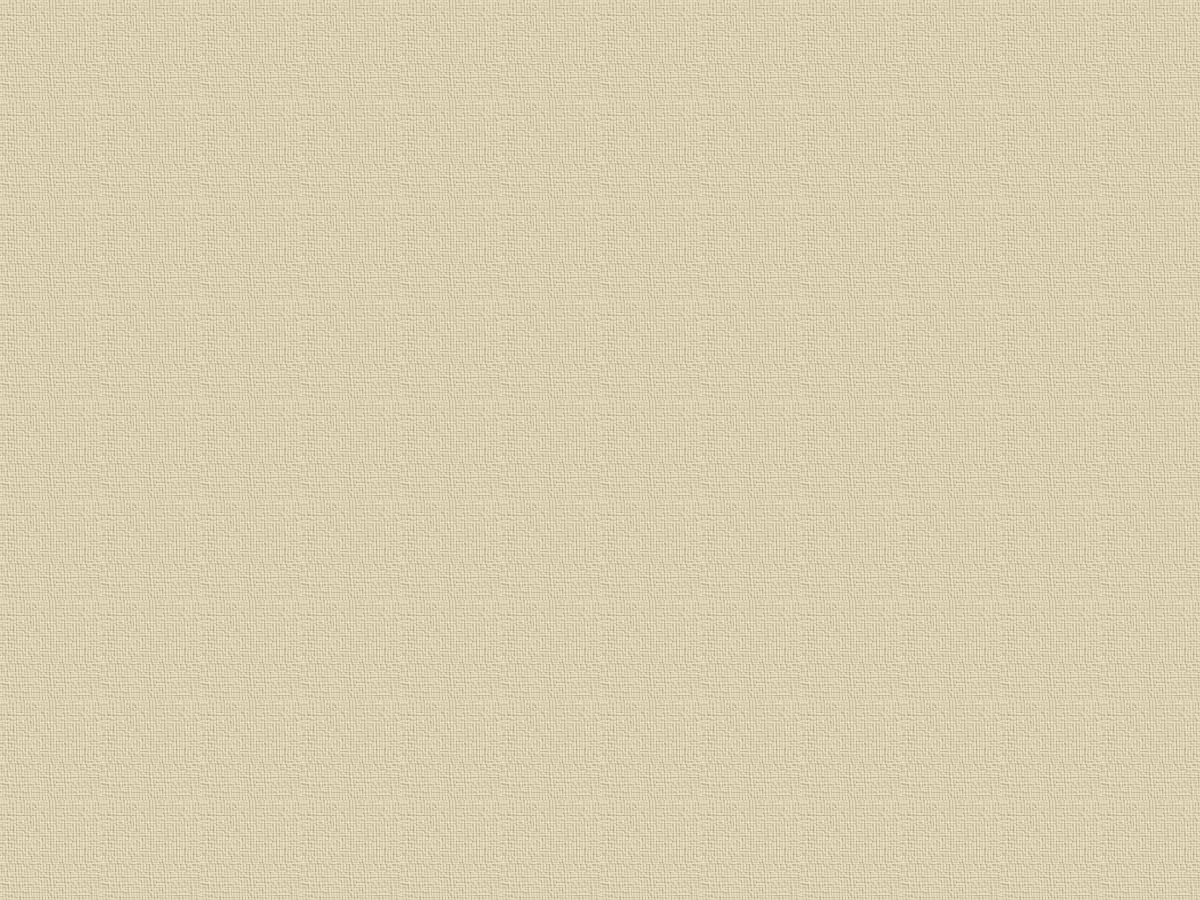Habit Change: Solving Not Complaining
HABIT CHANGE: SOLVING NOT COMPLAINING (ISSUE 108)
By Diane Gold
All of us have developed the habits of solving and complaining. The very assertive yet ineffective method of complaining has been reinforced into our beings since our families and our teachers said,
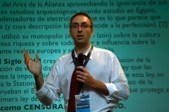 “Speak out,”
“Speak out,”
without giving us parameters about what that meant in terms of effect and solution. Many of us thought it meant speak about a topic, and point out what’s wrong with nothing further. Informing is a crucial part of the process, but it is not enough. Once we have informed, we have to start a path to solution, if solution is our goal. Speech
Because society keeps changing and each generation latches on to slogans, I remember,
“Question authority.”
The point of this commandment was to get us to think, communicate, create and solve. However, many people neglected to encourage the create and solve mechanisms necessary for us to accomplish change and allowed us to gossip, nag, criticize, whine and moan since this piece of the speaking out concept occurs without much effort.
The slogan, as I see it, was meant to stimulate the mind into founding new solutions. Parents wanted children to think for themselves and accept not what others fed them without critical thinking and deduction.
 What transpired for various reasons has been a culture of speakers with no solutions, many just “orating for ego” (good T-shirt). Since there has not been a focus solving vs. complaining in modern times, it is more common to hear groups of complainers than groups of problem solvers. Plus, it’s more difficult to create than to condemn (another good T-shirt, “create, don’t condemn”).
What transpired for various reasons has been a culture of speakers with no solutions, many just “orating for ego” (good T-shirt). Since there has not been a focus solving vs. complaining in modern times, it is more common to hear groups of complainers than groups of problem solvers. Plus, it’s more difficult to create than to condemn (another good T-shirt, “create, don’t condemn”).
HABIT CHANGE, FROM COMPLAINING TO SOLVING
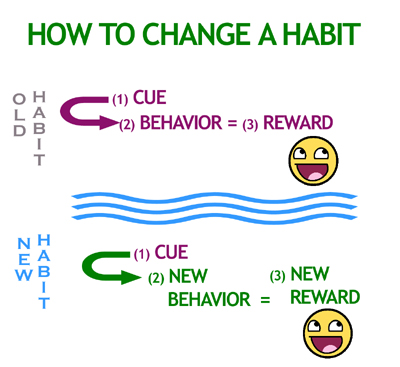 In order to solve vs. complain, we follow the process for any habit change: cue, replace the old action, reward.
In order to solve vs. complain, we follow the process for any habit change: cue, replace the old action, reward.
In the old scenario, we saw something we disagreed with (the cue or trigger that sets off the action).
We went on our internet radio show (well, not when I was young) and complained or preached about it (the action).
We felt good because we had talked (the reward), but what we saw as wrong did not change.
In the new scenario, we see something with which we disagree (the cue, same as original).
We have a pre-planned new activity such as going to a focus group strictly to work on a solution (the new action).
We feel good because we have created or are on the path to creating a viable solution to the issue (the reward).
THE ACTION (AFTER THE CUE, IN ORDER TO GET THE REWARD)
Of course, it is important to communicate our thoughts, desires, opinions. Exclusively talking about the wrongs, the negatives, the bad situations may bolster our egos or get us into a clique, but it deludes us into feeling accomplished and obstructs our path toward solution.

What if all the people in our clique used our wonderful brain power to brainstorm about how to solve something? We would use up the same amount of time and energy. We would be sharing ideas that could sprout into solutions. True, we would expose ourselves to ridicule if our clique did not agree with our solutions. But, creating a solution is what everyone wants, right?
If we truly believe in an idea, we will want it to have a result. This means acting toward moving it forward.
We can ask,
“If I could be instrumental in solving a national feud through some super technique, would you want me to talk about how terrible war is or would you want me to administer the technique so that we could accomplish cooperation and harmony?”
Or,
“If we all had a loved one who was sick from a disease, would you want me to talk about how terrible the pharmaceutical industry is or would you want the cure to the disease?”
Or, let’s get personal.
“If you had nightmares, would you want me to talk about how many illegitimate techniques offer to alleviate them or would you want that one super relaxation technique that stopped nightmares?”
SYSTEMATIC APPROACH
I’m pretty sure we would all rather have a solution than to hear the story about the problem, rather than the process for solving it. I’m also pretty sure we all have many useful ideas that can turn into brilliant formulations toward solving or beginning to solve a situation or preparing a solution. All we need is a systematic approach to discovering a solution. In order to limit the possibility that we go off track, we could employ the following systematic approach: 
1) Use no statements that self-aggrandize.
2) Make no judgments when an idea is brought to the table.
3) Minimize kvetching (Yiddish word for complaining) as soon as it arrives out of our mouths.
4) Keep doing it. Place as much energy on solving as we have on complaining; and we will make a difference.
CONCLUSION
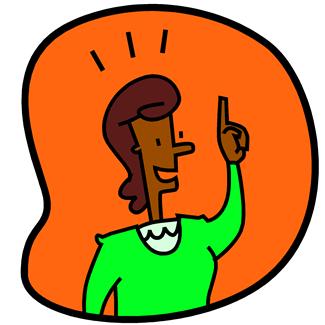 Now that we are evolved enough to understand this, it is time to consider the solution process with every speech. We may have to change our habit, if we are used to being critical, not constructive. We can certainly slap the wrist of education for lack of emphasis on oration without solution. And we can change how we educate from now on.
Now that we are evolved enough to understand this, it is time to consider the solution process with every speech. We may have to change our habit, if we are used to being critical, not constructive. We can certainly slap the wrist of education for lack of emphasis on oration without solution. And we can change how we educate from now on.
I am reminded of the 2013 engineering toy for girls, built on the premise that girls need engineering concepts as do boys. This toy is breaking the gender-biased stereotypical mold that girl toys should be dolls and boy toys should be construction sets. The creator, whose training is in engineering, saw the need and created the solution. She could still be talking about it, but she executed a solution and talks about that.
In the same way, educators can start forming the creative solution process at very young ages. And families that encourage their children to speak out can back that up with the importance of solving, rather than complaining.
ACTION STEPS
Here is a process for creating a solution. Do it to see what happens. Using a simple process of writing down the first 5-10 things that come into your head, come up with your own process for the scenario in 1):
1) Family 1 lives on 1 side of the river. Family 2 lives on the other side of the river. Each family has had one of their family members hurt by the other family as a result of war or land disputes, and the families currently have sworn animosity toward each other.
Family 1 needs a special berry that grows on Family 2’s side. Family 2 needs a special root that grows on Family 1’s side. Both the root and the berry will save lives, but the families do not speak to each other. 
What process can we offer the families to start talking again, and how can they curb their hate?
2) Email us your process. It will be kept anonymous.
3) To get thinking about solutions, not complaints, let us know how you would respond to the following:
a) On a scale of 1 to 10, 10 being a lot, how much do you believe you can make a difference of any size in your community?
b) On a scale of 1 to 10, 10 being a lot, how much would you like to contribute to human rights and social harmony?
FEEDBACK
Please leave a comment and LIKE.
DIANE GOLD, AUTHOR
Diane Gold, Founder of Warriors of Weight, Turning Habits Into Health, is a mentor in tai chi, kung fu and meditation, a music, fitness and stress expert, dedicated mom, studying plant-based nutrition and habit change.
She knows from personal experience how easy it is to get caught up in opinion sharing which can take people away from creating solutions. She says,
“It’s pretty natural to speak out when we see wrong. Especially if we were encouraged to do so as kids. Based on all the speakers and regular folk who are complainers, we, as parents, and the education system from which we come, did not appropriately teach that solutions are a large and necessary follow up to any criticism. Without it, we are just exercising our mouths.
“Solutions are scary because we do not have a whole crowd around us when we are the solution creator and sole discoverer. When we complain, there are always people who can relate to our complaint. But when we solve, this leaves us completely vulnerable to disapproval and social scorn. Which is part of why we gravitate toward complaining and not solving, in the first place.
“Let’s make sure, from now on, we show by example that we devote as much energy to solving a situation as we do discussing what needs solving. This will guarantee positive direction for all humanity.”

 I saw a photo and exercise routine one of my (actual) friend’s shared on a social networking site. My friend is an avid athlete and 30-year yogi, which means she is strong and fit. She communicates with many people who are also strong and fit. So when she shared a plank photo and instructions for a plank exercise, starting with 20 seconds per day, she was probably directing it to the fit crowd. I immediately responded to her post with an
I saw a photo and exercise routine one of my (actual) friend’s shared on a social networking site. My friend is an avid athlete and 30-year yogi, which means she is strong and fit. She communicates with many people who are also strong and fit. So when she shared a plank photo and instructions for a plank exercise, starting with 20 seconds per day, she was probably directing it to the fit crowd. I immediately responded to her post with an 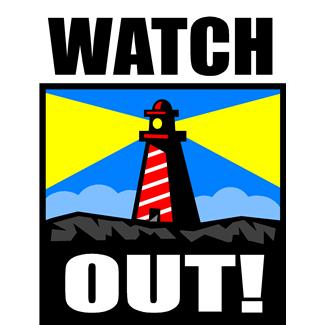 Most people are attracted to an interesting workout photo that gets passed around. What was missing, and I’m not pointing fingers, was a super big warning sign. Having owned an active martial arts school for over 15 years, I have heard many stories about injury due to improper workout. I have helped show many a newbie student why proper alignment is everything and that haste can cost precious training time as we heal from beginner, didn’t-follow-directions injuries.
Most people are attracted to an interesting workout photo that gets passed around. What was missing, and I’m not pointing fingers, was a super big warning sign. Having owned an active martial arts school for over 15 years, I have heard many stories about injury due to improper workout. I have helped show many a newbie student why proper alignment is everything and that haste can cost precious training time as we heal from beginner, didn’t-follow-directions injuries. It is extremely easy to hurt the back doing the plank exercise, even though it is a wonderful technique if we have the abs for it. It’s whether or not they are strong enough to hold our entire body upon command. And that is what today’s exercise is about. Back Injury
It is extremely easy to hurt the back doing the plank exercise, even though it is a wonderful technique if we have the abs for it. It’s whether or not they are strong enough to hold our entire body upon command. And that is what today’s exercise is about. Back Injury Most of us want efficiency and want the shortest road toward what we consider perfection that we can take. That means we would like to bypass any frills and get right to the real work. Yet, some exercises, worldwide, put, at least, 50% fluff in them.
Most of us want efficiency and want the shortest road toward what we consider perfection that we can take. That means we would like to bypass any frills and get right to the real work. Yet, some exercises, worldwide, put, at least, 50% fluff in them.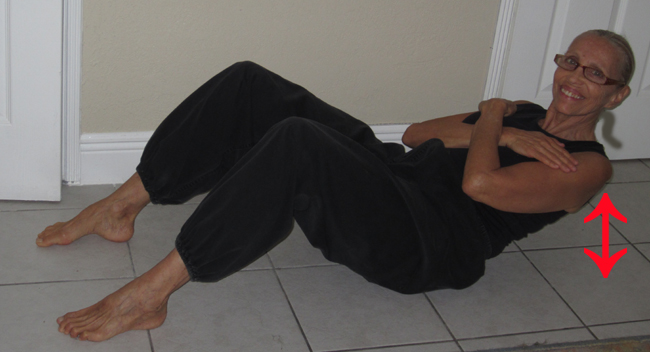
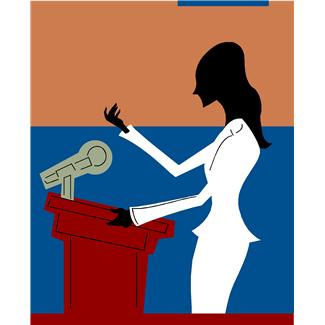
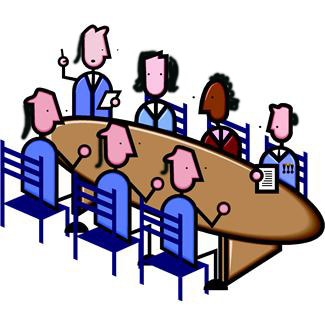
 “Drugs are tested by the people who manufacture them, in poorly designed trials, on hopelessly small numbers of weird, unrepresentative patients, and analyzed using techniques which are flawed by design, in such a way that they exaggerate the benefits of treatments.”
“Drugs are tested by the people who manufacture them, in poorly designed trials, on hopelessly small numbers of weird, unrepresentative patients, and analyzed using techniques which are flawed by design, in such a way that they exaggerate the benefits of treatments.” What Henry I. Miller says in his Forbes article, taken from his experience as an FDA medical officer, is that many drug studies that are not published are not negative but inconclusive. What I say is there should be some sort of very accessible bank to everyone, patients, friends of patients and medical personnel, alike, with all study results, so that those who are evaluating a drug, whether taking it or prescribing it, can make the most informed decision based upon all previous experience that anyone has had with it, regardless of why its results may not have been published.
What Henry I. Miller says in his Forbes article, taken from his experience as an FDA medical officer, is that many drug studies that are not published are not negative but inconclusive. What I say is there should be some sort of very accessible bank to everyone, patients, friends of patients and medical personnel, alike, with all study results, so that those who are evaluating a drug, whether taking it or prescribing it, can make the most informed decision based upon all previous experience that anyone has had with it, regardless of why its results may not have been published. make as informed decision as possible about any drug or treatment with the transparency factor in place.
make as informed decision as possible about any drug or treatment with the transparency factor in place.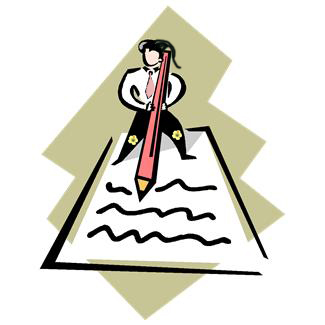 This reminds me of the waiver to a clinical trial I considered. One of the questions they asked is,
This reminds me of the waiver to a clinical trial I considered. One of the questions they asked is,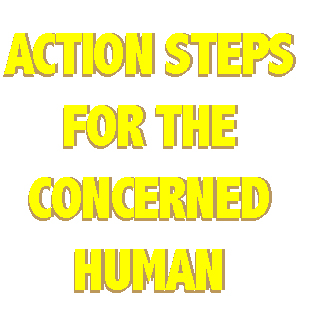 1)
1)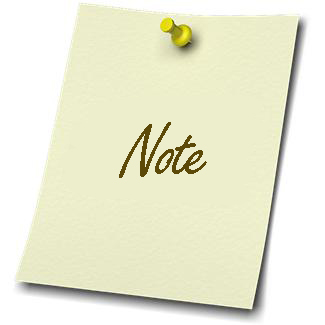 In 2007, the FDA Amendment Act required all trials of any drug or device must be registered. Also, for a drug to be approved, its results must be posted to clinicaltrials.gov within a year of the end of the trial.
In 2007, the FDA Amendment Act required all trials of any drug or device must be registered. Also, for a drug to be approved, its results must be posted to clinicaltrials.gov within a year of the end of the trial.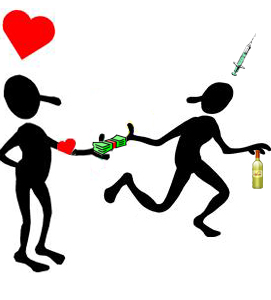 According to the dictionary, an enabler is a person who makes something possible. In the habit sense, it is a person who assists a habitual behaviorist to get her reward from some negative behavior.
According to the dictionary, an enabler is a person who makes something possible. In the habit sense, it is a person who assists a habitual behaviorist to get her reward from some negative behavior.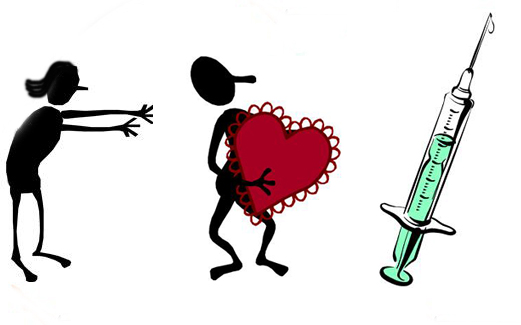
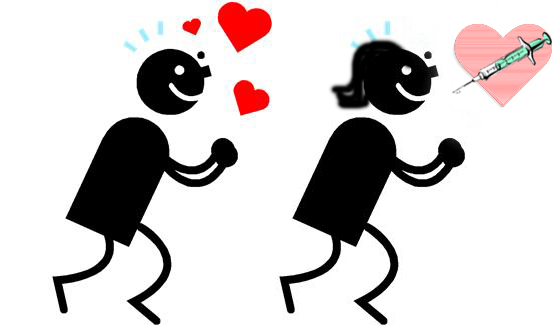
 In the same way that some cultures send a young person out to prove adulthood, we must allow our loved ones to fend for themselves or work on themselves, or they will never prove themselves to themselves. If we want to save ourselves, we must, in turn, remove the magnetic pull they have on us and let go, if we are to find our own way.
In the same way that some cultures send a young person out to prove adulthood, we must allow our loved ones to fend for themselves or work on themselves, or they will never prove themselves to themselves. If we want to save ourselves, we must, in turn, remove the magnetic pull they have on us and let go, if we are to find our own way.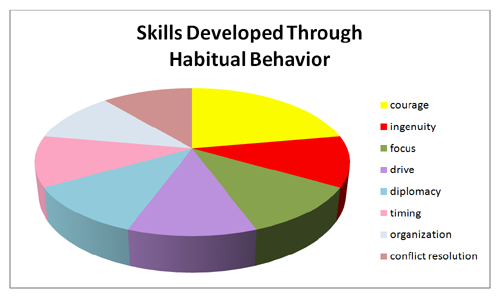
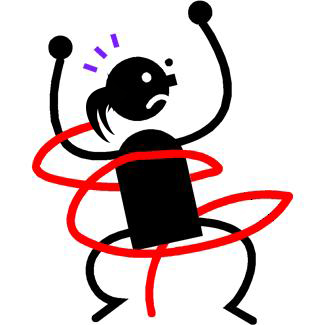 Let’s define habitual behavior as a pattern of action that follows an emotional and/or physical craving that leads to some type of internal intake or ingestion, tick, movement, series of actions, that takes place several times a day, once daily or several times a week, and that, when removed without replacement, causes psychic or physical reaction that can be severely painful. When we change the habit, we actively divert our own attention from the expectation of the old reward we couldn’t live without using the same skill set we created in developing the original habitual behavior; this is how we form a new one.
Let’s define habitual behavior as a pattern of action that follows an emotional and/or physical craving that leads to some type of internal intake or ingestion, tick, movement, series of actions, that takes place several times a day, once daily or several times a week, and that, when removed without replacement, causes psychic or physical reaction that can be severely painful. When we change the habit, we actively divert our own attention from the expectation of the old reward we couldn’t live without using the same skill set we created in developing the original habitual behavior; this is how we form a new one. we have ingenuity enough to have devised a way to live with our habitual behavior in our lives,
we have ingenuity enough to have devised a way to live with our habitual behavior in our lives,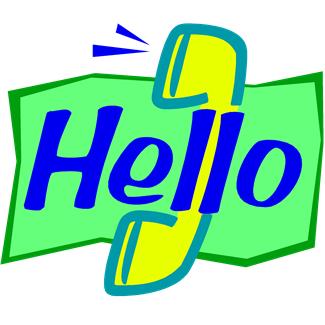
 Most of the time, we develop habitual behavior because we experience grief, anger or limited self-esteem. These can come from abuse, crisis, death, sickness and whatever our mind conjures, since feelings are irrational and show up when they show up. Since we have a myriad of valuable skills from our habitual behavior, we are worthy, since worth is calculated by our collection of respectable, attention-getting skills.
Most of the time, we develop habitual behavior because we experience grief, anger or limited self-esteem. These can come from abuse, crisis, death, sickness and whatever our mind conjures, since feelings are irrational and show up when they show up. Since we have a myriad of valuable skills from our habitual behavior, we are worthy, since worth is calculated by our collection of respectable, attention-getting skills.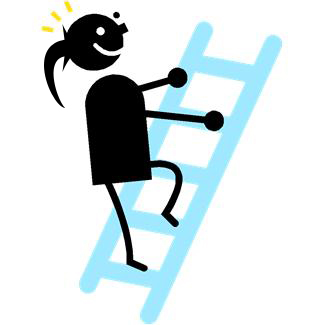
 The Environmental Protection Agency (epa.gov) regulates pesticides, but the amounts it allows in our fruits and vegetables is not so easy for the lay person to evaluate. Partly because we don’t have the time to look up the more than 1055 approved pesticides in use in the US and partly because the EPA is not offering the easiest chart for consumers. Agricultural Pesticides
The Environmental Protection Agency (epa.gov) regulates pesticides, but the amounts it allows in our fruits and vegetables is not so easy for the lay person to evaluate. Partly because we don’t have the time to look up the more than 1055 approved pesticides in use in the US and partly because the EPA is not offering the easiest chart for consumers. Agricultural Pesticides
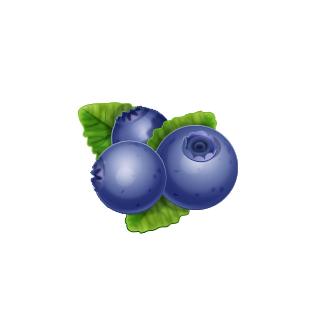 Whatsonmyfood.org gives us some excellent information about the presence of pesticides on foods. It takes its info from the US Department of Agriculture, Pesticide Data Program, currently using 2005 data. For example, it lists that blueberries have a particular percentage of all blueberries in the US, on average, have pesticides A, B, C, D, E, F, G, H, I, J, K, L, M, N, O, P, Q, R, S, T, U, V, W, X, Y, Z, AA, BB, CC, DD, EE, FF, GG, HH, II, JJ, KK, LL, MM, NN, OO, PP, QQ, RR, SS, TT, UU, VV, WW, XX and YY present. It would be great if we could easily find a table showing the EPA tolerances (amount of pesticides that are permitted to be present and still be safe for consumption) for each of those pesticides.
Whatsonmyfood.org gives us some excellent information about the presence of pesticides on foods. It takes its info from the US Department of Agriculture, Pesticide Data Program, currently using 2005 data. For example, it lists that blueberries have a particular percentage of all blueberries in the US, on average, have pesticides A, B, C, D, E, F, G, H, I, J, K, L, M, N, O, P, Q, R, S, T, U, V, W, X, Y, Z, AA, BB, CC, DD, EE, FF, GG, HH, II, JJ, KK, LL, MM, NN, OO, PP, QQ, RR, SS, TT, UU, VV, WW, XX and YY present. It would be great if we could easily find a table showing the EPA tolerances (amount of pesticides that are permitted to be present and still be safe for consumption) for each of those pesticides. The Environmental Working Group has created a consumer guides that lists which top fruits and veggies have the most and least pesticides so that we can choose how to spend our money and ingest fewer pesticides. This group is the environmental health and advocacy organization whose work resulted in the Food Quality Protection Act in 1996.
The Environmental Working Group has created a consumer guides that lists which top fruits and veggies have the most and least pesticides so that we can choose how to spend our money and ingest fewer pesticides. This group is the environmental health and advocacy organization whose work resulted in the Food Quality Protection Act in 1996. APPLES
APPLES
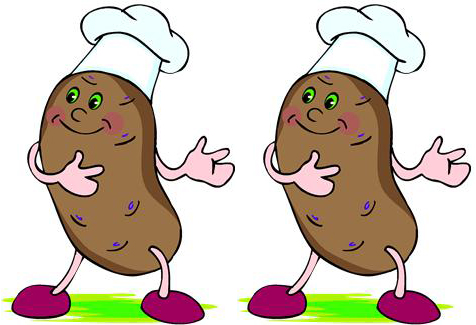

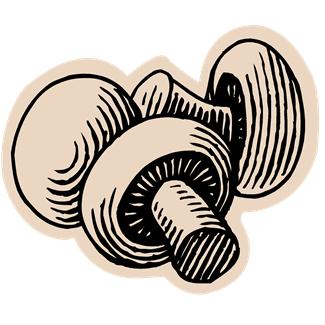
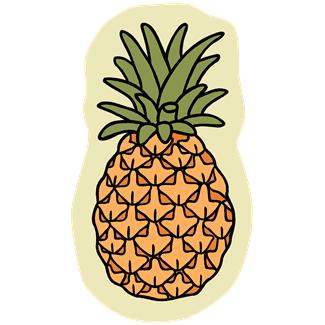
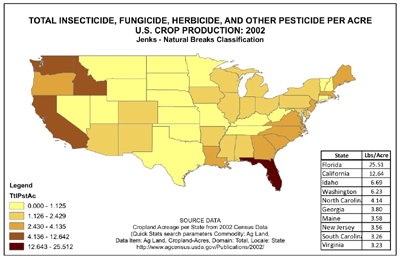 Pesticides are here, both on organic and conventional produce. Synthetic pesticides can burn the mouth, lungs, the respiratory system, cause nerve damage, cause skin to peel or change color, cause temporary blindness when exposure is high. Hopefully, we are never exposed to enough at once to cause anything like this. But it makes us think about how safe pesticides are in smaller quantities on our food.
Pesticides are here, both on organic and conventional produce. Synthetic pesticides can burn the mouth, lungs, the respiratory system, cause nerve damage, cause skin to peel or change color, cause temporary blindness when exposure is high. Hopefully, we are never exposed to enough at once to cause anything like this. But it makes us think about how safe pesticides are in smaller quantities on our food.
 Animal protein is known to clog arteries. Plant-based is not known to do this.
Animal protein is known to clog arteries. Plant-based is not known to do this. If people are healthier and use less medical services, less pharmaceuticals; they will reduce their own personal costs. They will also reduce the pharmaceutical and medical equipment manufacturing rate as well as the distribution and transportation costs which are 1.5 to 4.5% of their sale price, according to Transportation Journal, Jan., 2005.
If people are healthier and use less medical services, less pharmaceuticals; they will reduce their own personal costs. They will also reduce the pharmaceutical and medical equipment manufacturing rate as well as the distribution and transportation costs which are 1.5 to 4.5% of their sale price, according to Transportation Journal, Jan., 2005. If we could avoid running over a dog or cat in the road, would we do it? Of course, we would. In the same way, if we transitioned to a plant-based diet, we would be doing just that. We would automatically be eliminating the need for the animal industry to replace food we just ate. This means we would slow down the process of using animals for food, which, more times than we would like to think, abuses, terrorizes and mutilates animals. Although there are hard, honest workers in the animal food industry, if there are other choices, can we make them?
If we could avoid running over a dog or cat in the road, would we do it? Of course, we would. In the same way, if we transitioned to a plant-based diet, we would be doing just that. We would automatically be eliminating the need for the animal industry to replace food we just ate. This means we would slow down the process of using animals for food, which, more times than we would like to think, abuses, terrorizes and mutilates animals. Although there are hard, honest workers in the animal food industry, if there are other choices, can we make them? Another reason for considering a plant-based diet (or its direction) is personal to me. Therefore, please consider this in evaluating it.
Another reason for considering a plant-based diet (or its direction) is personal to me. Therefore, please consider this in evaluating it.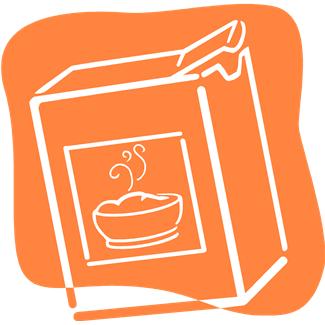 2)
2)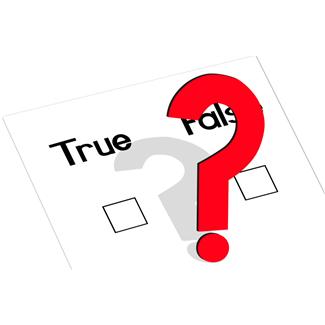
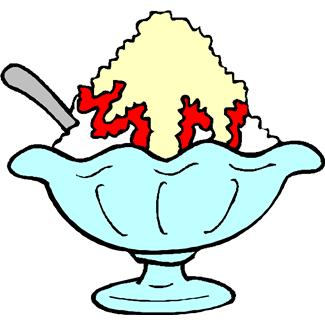 This makes complete sense from a visceral point of view. Let’s say we have not had cake, cookies, candy, ice cream for a while because we always eat too much or because we have heard sugar is bad. What happens when we have some?
This makes complete sense from a visceral point of view. Let’s say we have not had cake, cookies, candy, ice cream for a while because we always eat too much or because we have heard sugar is bad. What happens when we have some? According to some old US Department of Commerce sales reports, researched, converted to approximate consumption and infographed by Stephen Guyenet, an obesity researcher at University of Washington, B.S., biochemistry, PhD, neurophysiology, and Jeremy Landen, as of 2012, we consumed approximately 100 pounds of sugar per year. In 1822, we consumed 6.3 pounds per person per year. Another way of looking at it is that in 1822, we consumed the equivalent of a can of cola’s worth of sugar in five days. Now, we consume that number in seven hours. That’s 19 times an increase.
According to some old US Department of Commerce sales reports, researched, converted to approximate consumption and infographed by Stephen Guyenet, an obesity researcher at University of Washington, B.S., biochemistry, PhD, neurophysiology, and Jeremy Landen, as of 2012, we consumed approximately 100 pounds of sugar per year. In 1822, we consumed 6.3 pounds per person per year. Another way of looking at it is that in 1822, we consumed the equivalent of a can of cola’s worth of sugar in five days. Now, we consume that number in seven hours. That’s 19 times an increase. According to the FDA’s food labeling provisions, not all sugars are required to be listed. Currently, regulation 101.9(c)(6)ii requires that the sugars that must be counted within the labeling system are mono- and disaccharides. That means glucose, fructose, lactose, sucrose. All other sugars may be included voluntarily. That includes fiber and sugar alcohols such as sorbitol, xylitol, mannitol.
According to the FDA’s food labeling provisions, not all sugars are required to be listed. Currently, regulation 101.9(c)(6)ii requires that the sugars that must be counted within the labeling system are mono- and disaccharides. That means glucose, fructose, lactose, sucrose. All other sugars may be included voluntarily. That includes fiber and sugar alcohols such as sorbitol, xylitol, mannitol.
 Regulation of sugar intake is good. Knowing what sugary substances we ingest is great. If we don’t stress our bodies by putting them through the sugar roller coaster, we are better off. If our bodies react poorly to high sugar intake, we can notice it. Is sugar bad for our health? It depends upon which kind of sugar, the condition of our health, how much and our lifestyle.
Regulation of sugar intake is good. Knowing what sugary substances we ingest is great. If we don’t stress our bodies by putting them through the sugar roller coaster, we are better off. If our bodies react poorly to high sugar intake, we can notice it. Is sugar bad for our health? It depends upon which kind of sugar, the condition of our health, how much and our lifestyle.
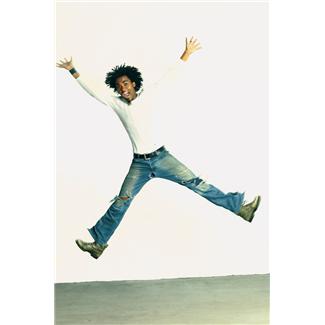 The habit of gratitude can be an acquired taste. Some of us naturally feel love and happiness with each positive occurrence. We also may have the temperance to quell the urge for revenge in negative events. Others of us train ourselves to jump-start the love through various means, even though we get angry. And then there are most of us who can develop this habit through the study of philosophy, through the inspiration of a teacher, the appreciation for a second chance or the lessons that experience brings.
The habit of gratitude can be an acquired taste. Some of us naturally feel love and happiness with each positive occurrence. We also may have the temperance to quell the urge for revenge in negative events. Others of us train ourselves to jump-start the love through various means, even though we get angry. And then there are most of us who can develop this habit through the study of philosophy, through the inspiration of a teacher, the appreciation for a second chance or the lessons that experience brings.
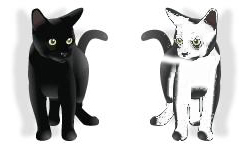 5) What about a friend’s offering the very thing you wished for without your having to ask? This happened to me when my close friend suggested my pets could stay with her while I traveled. If you’ve ever had a pet, you know how important it is to feel secure with the people who are taking care of them.
5) What about a friend’s offering the very thing you wished for without your having to ask? This happened to me when my close friend suggested my pets could stay with her while I traveled. If you’ve ever had a pet, you know how important it is to feel secure with the people who are taking care of them. 13) How about going to the beach and smelling that delicious salt smell? It is healing. wonderful and a big gift.
13) How about going to the beach and smelling that delicious salt smell? It is healing. wonderful and a big gift.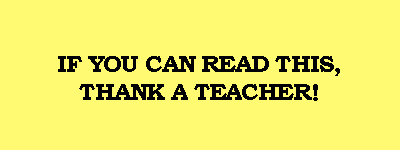 There used to be a sign in the NYC subway that said,
There used to be a sign in the NYC subway that said,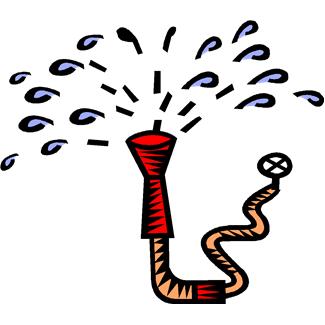 23) What about having running water? Now that I have an awareness of how many people go to the river or water location daily to get water for the house, I am super grateful. I also know that 783 million do not have access to clean water; many are bringing home contaminated water. I also know that, if we reduced our bottled water intake by 1/3, we could fund a project to fix the dirty water issue.
23) What about having running water? Now that I have an awareness of how many people go to the river or water location daily to get water for the house, I am super grateful. I also know that 783 million do not have access to clean water; many are bringing home contaminated water. I also know that, if we reduced our bottled water intake by 1/3, we could fund a project to fix the dirty water issue.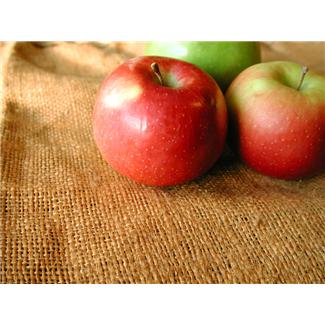 28) How about the way a food or drink calms the spirit from tension or anxiety? I’m remembering mouthwatering organic apple cider that hit the spot after one of those awful medical tests last week. It calmed my system but mostly my mind. It was like magic elixir to take away the psychological trauma from the sounds of a magnetic imaging machine.
28) How about the way a food or drink calms the spirit from tension or anxiety? I’m remembering mouthwatering organic apple cider that hit the spot after one of those awful medical tests last week. It calmed my system but mostly my mind. It was like magic elixir to take away the psychological trauma from the sounds of a magnetic imaging machine. 35) Not making too many mistakes when playing the piano recital.
35) Not making too many mistakes when playing the piano recital. 63) Living within 2 minutes of the ocean.
63) Living within 2 minutes of the ocean.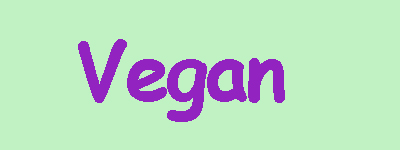 74) Having the locational and financial opportunity to be vegan.
74) Having the locational and financial opportunity to be vegan.
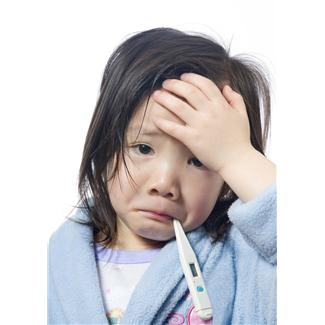 We are often not aware of sickness habits or wellness habits. For the most part, when we’re sick, we are consumed with feeling sick. Hopefully, you can’t relate to this feeling, but most of us can and do. And when we are well, we are not thinking about sickness.
We are often not aware of sickness habits or wellness habits. For the most part, when we’re sick, we are consumed with feeling sick. Hopefully, you can’t relate to this feeling, but most of us can and do. And when we are well, we are not thinking about sickness.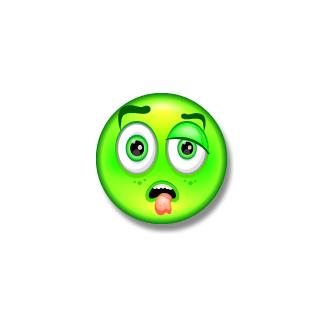 So far, the only times I have been sick have happened in the past couple of years since I turned 60. And both times, my “specialist” physicians could give me no definitive cause for what I was feeling. That did prompt me to pine for a non-fiction version of Dr. House, MD, the TV series diagnostician, extraordinaire and gave me a bit of anxiety. I even wrote an article about it which you can access at the end of this article.
So far, the only times I have been sick have happened in the past couple of years since I turned 60. And both times, my “specialist” physicians could give me no definitive cause for what I was feeling. That did prompt me to pine for a non-fiction version of Dr. House, MD, the TV series diagnostician, extraordinaire and gave me a bit of anxiety. I even wrote an article about it which you can access at the end of this article.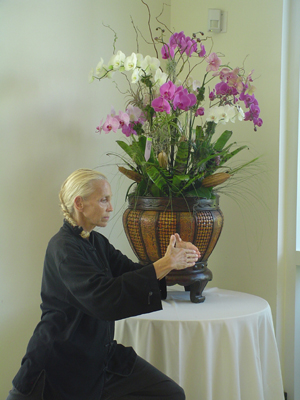 What I realized immediately was that the position of the proposed 48-hour position of the head was the suspended head position we teach in tai chi that brings stability to the region, allows the most oxygen to freely flow to the lungs, taxes the neck less than any other position and allows the most alertness and focus. It maintains tai chi principle by keeping the bones and body in proper alignment. It turns out it also helps to alleviate dizziness.
What I realized immediately was that the position of the proposed 48-hour position of the head was the suspended head position we teach in tai chi that brings stability to the region, allows the most oxygen to freely flow to the lungs, taxes the neck less than any other position and allows the most alertness and focus. It maintains tai chi principle by keeping the bones and body in proper alignment. It turns out it also helps to alleviate dizziness.
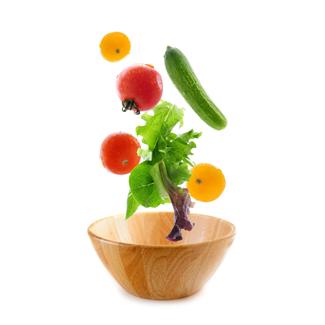 When we are sick, we may be nauseated, and we may not feel hungry. If we don’t eat, unfortunately, we will deplete our body nutrients.
When we are sick, we may be nauseated, and we may not feel hungry. If we don’t eat, unfortunately, we will deplete our body nutrients.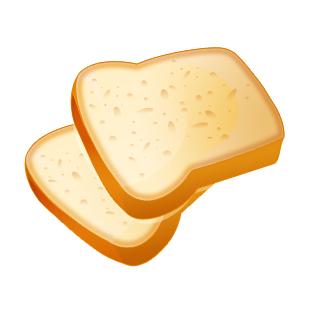
 1)
1) 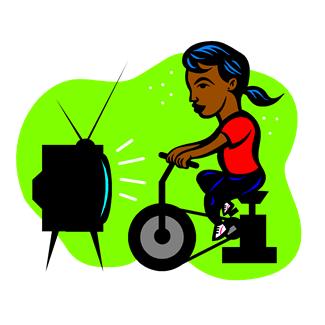 May we all have more healthy days than sick, and may we take responsibility for turning sickness into health.
May we all have more healthy days than sick, and may we take responsibility for turning sickness into health.





